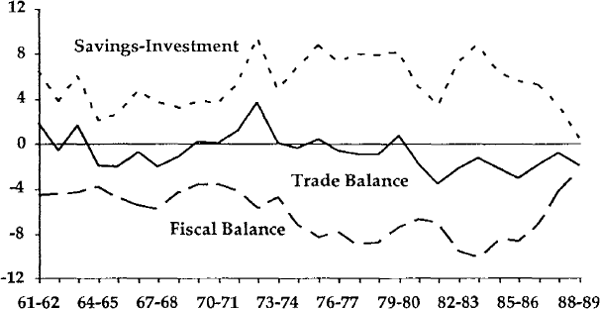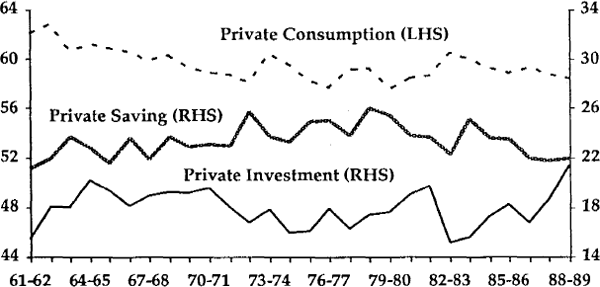RDP 9002: Public Sector Growth and the Current Account in Australia: A Longer Run Perspective Appendix A: The Statistical Discrepancy
July 1990
- Download the Paper 1.2MB
In Figure 1a we construct a new economy called OZ2, where we assume that all the statistical discrepancy is unmeasured consumption expenditure (which appears the most unlikely – the best alternative is that it is spread among a number of items likely of the alternatives). The behaviour of the savings and investment balance now looks quite different. The gradual rise of savings relative to investment during the 1960s is no longer reversed during the 1970s, and continues into the mid-1980s (apart from the investment induced decline at the beginning of the 1980s). The saving-investment balance then falls sharply from 1984/85, coinciding with the sharp improvement in the fiscal balance.

The decomposition of the saving-investment balance into its components for OZ2 is given in Figure 2a. Comparing Figure 2 and 2a we see that OZ2 has remarkably stable consumption, which trends down during the 1960s and 1970s and then trends up during the 1980s. Correspondingly, private saving rises gradually during the 1960s and 1970s and falls during the 1980s. One further interesting point to note is that private saving is more variable than private consumption.

The interpretation of the statistical discrepancy is important and needs to be remembered when interpreting the results in this paper (and most research results based on the National Accounts data). If the National Accounts is to retain credibility this particular problem needs to be addressed.